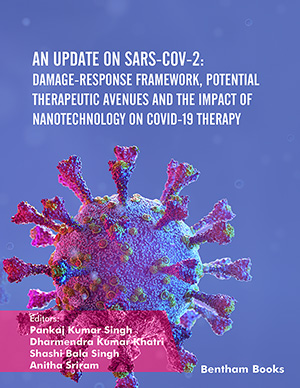Abstract
Numerous infectious diseases caused by microorganisms that rarely cause
disease in natural, stable immunocompetent hosts emerged in the late 20th century. The
existence of these diseases demonstrates that current principles of pathogenicity and
virulence fail to account for the fact that microbial pathogenesis is influenced by both
the microorganism and the host. To overcome this impediment to studies on the host
and microorganism interactions, a new theoretical approach is addressed to understand
microbial pathogenesis known as DRF. COVID-19 is introduced as the third most
pathogenic strain in the human population, leading to the deaths of millions of people.
Therefore, it is necessary to understand the key pathogenic pathways at the molecular
level and identify the targets to develop the treatments strategies for COVID-19
infected populations. In this chapter, we have highlighted the different COVID-19
pathogenesis pathways along with targets and their role in the pathogenic conditions at
molecular levels. The DRF provides a lens to understand COVID-19 pathogenesis and
consider how potential therapies could alter the disease's outcome by focusing on
mechanisms of host damage, especially immune-mediated damage.
Keywords: ADAM17, COVID-19, CSS (Cytokine storm Syndrome), Downregulation of hACE2, DRF, RAAS.






















